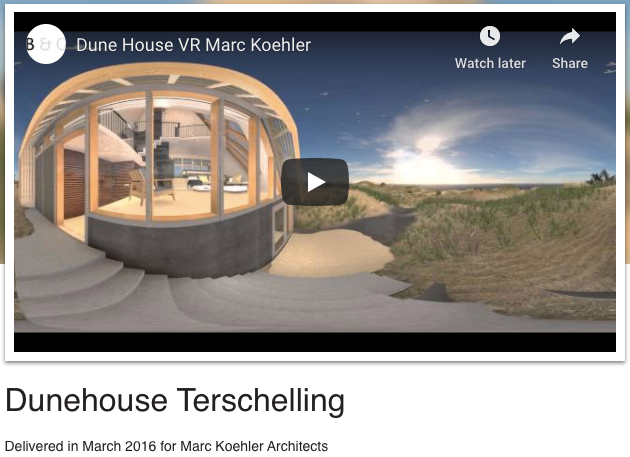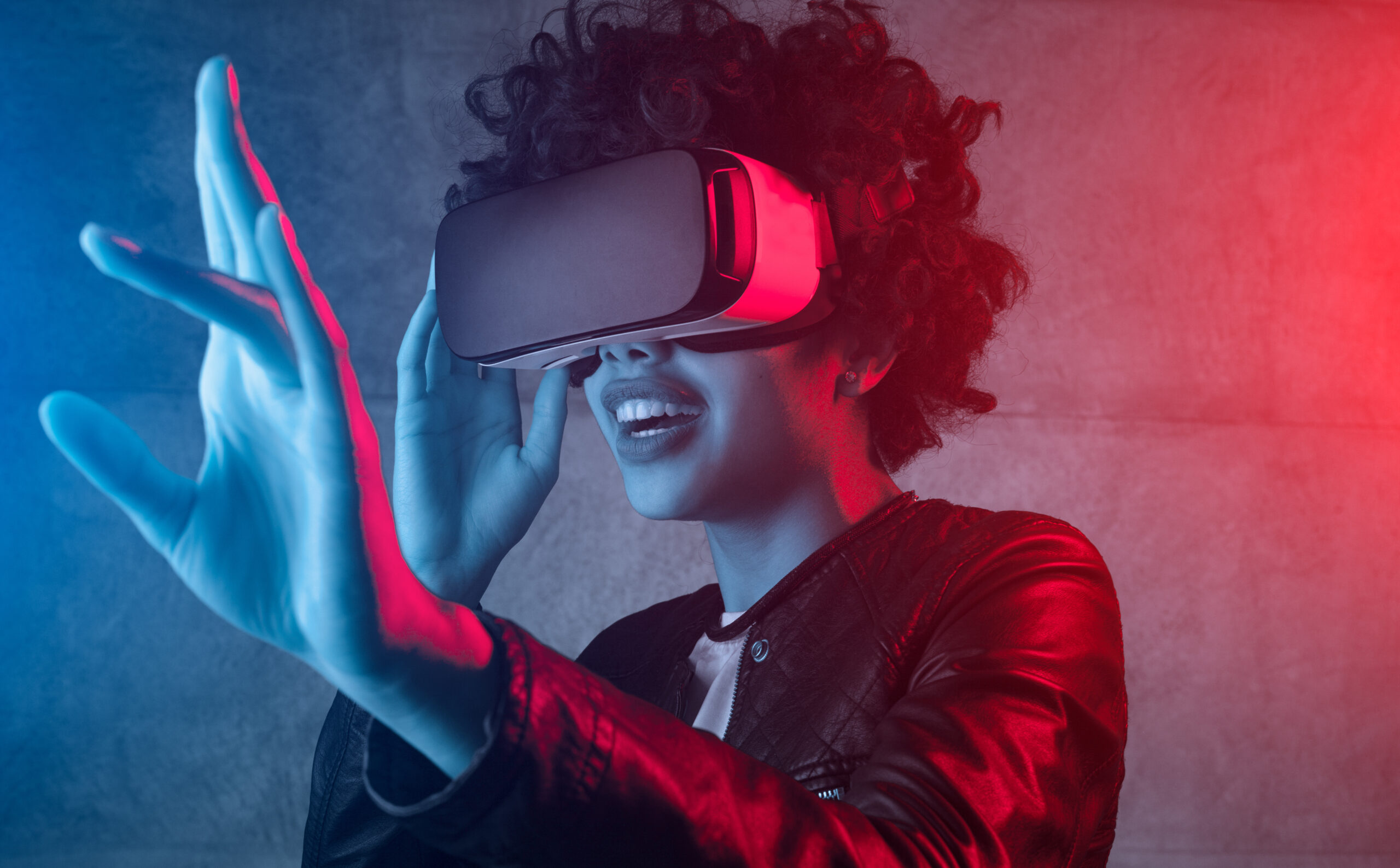
5 VR Companies Tapping Into the Power of Content Marketing
5 VR Companies Tapping Into the Power of Content Marketing
Alyssa Patzius, VP of Sales • Intero Digital • September 2, 2020
While content marketing isn’t foreign to technology marketers, applying content marketing to specific subsections of the technology sphere, including virtual reality, can be a challenge.
Just do a quick Google search for how VR companies can use content marketing. I’ll wait.
If your search results look anything like mine, you probably found lots of information on how companies can use VR in content marketing but nothing about how VR companies themselves can tap into content marketing to improve their business results.
That’s why I’ve taken a dive into content marketing in the virtual reality industry to find examples of VR companies using content marketing well.
Here are five VR companies whose content marketing efforts stand out:
Oculus
Oculus keeps its blog up-to-date, sometimes publishing multiple posts per day. Readers of the Oculus blog can keep up with new releases, get Oculus’ suggestions for must-play content on the platform, and learn about new features.
In addition to platform-specific content, Oculus also publishes engaging blog content that allows its audience to learn about the company as a whole and what it values. For example, Oculus published a blog post in observance of World Humanitarian Day. And within the post, the company recognized the holiday’s mission by sharing relevant 360-degree experiences from OculusTV and the documentary experience “Home After War.”
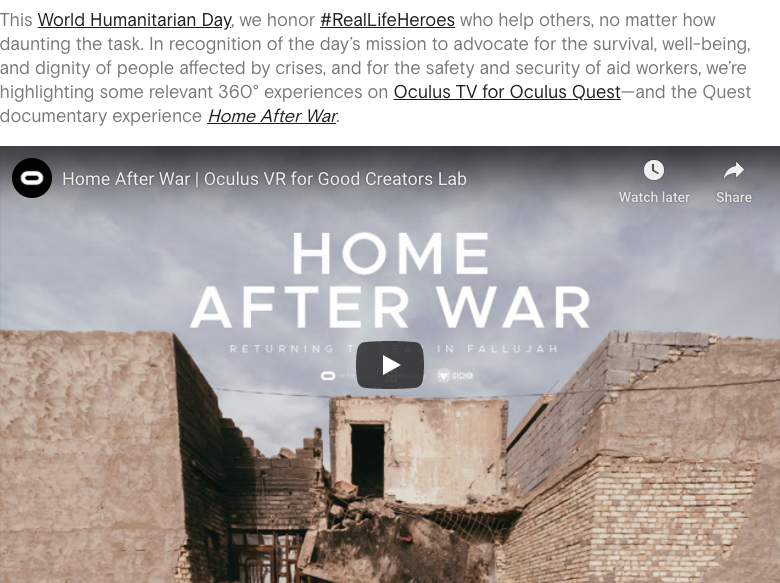
Google AR and VR
Google AR and VR uses a mix of copy, images, and video to communicate its offerings and how they work. But what stands out most is Google’s use of video to showcase what it has to offer.
On the Google AR and VR webpage, visitors can see videos of actual users experiencing Google’s augmented and virtual reality. The videos allow visitors to picture themselves using these services themselves and illustrates that they’re simple to use and engage with. These videos also provide a great user experience because rather than diving too deeply into the details too soon, the company gives visitors a quick illustration of Google AR and VR, and then if they’re ready, visitors can click “Learn more.”
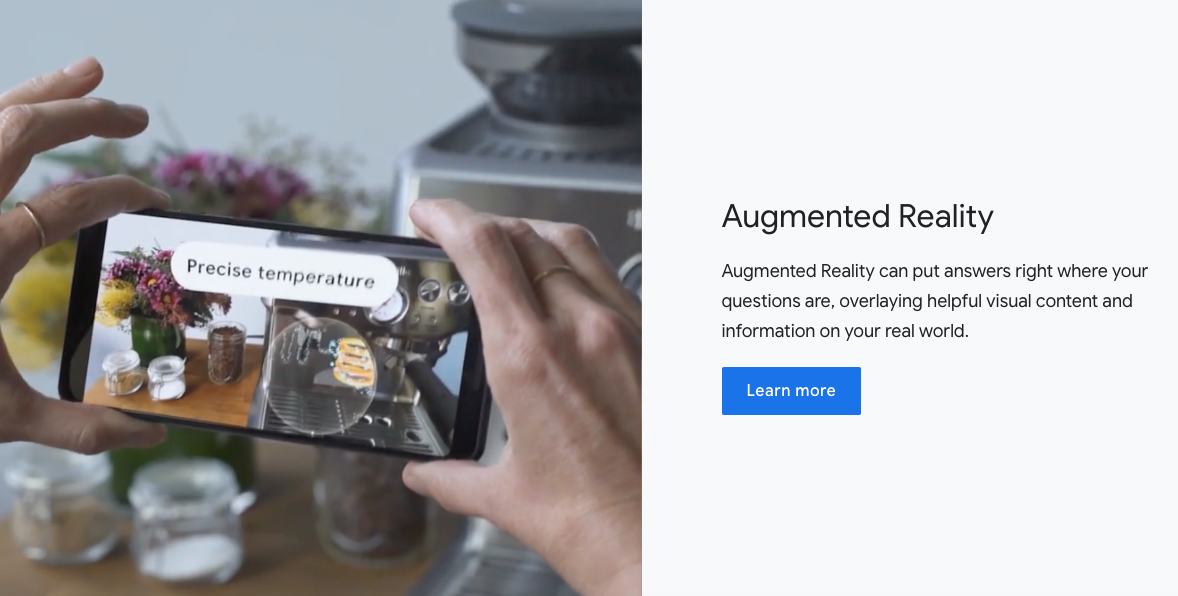
Unity
Unity has created educational offerings that users can use to build their skill levels. The company’s Learn Premium platform offers on-demand resources from Unity experts. On top of that service, Unity also offers certifications, live training workshops, and partner courses.
By providing this educational content to its users, Unity is positioning itself as a helpful brand that is there to provide value to users and help them continue to derive more and more value out of Unity’s offerings.
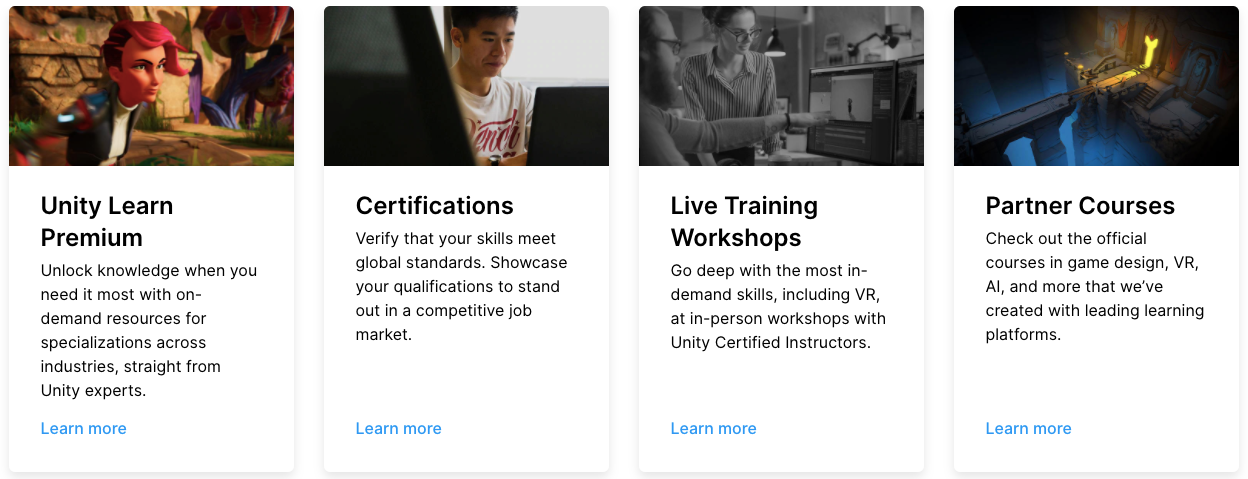
Wevr
While Wevr’s website contains helpful, engaging content, the company doesn’t stop there with its content marketing. It’s also tapping into the power of earned media.
When Wevr is mentioned in the press, the company adds the press mention to the press page on its website. And on its homepage, Wevr highlights the impressive publications the company has been featured in. These press mentions highlight to potential users that Wevr is an industry thought leader and a reputable company that’s innovative enough — and successful enough — to be covered in the media.

Bricks & Goggles
Tech marketers say that case studies are their fourth most frequently used type of content — and the highest-performing type of content for converting leads — according to the same Content Marketing Institute study. So it’s no surprise that Bricks & Goggles has tapped into case studies by featuring example work on its website.
Bricks & Goggles combines text, video, and images to showcase the work it has done for clients. This approach allows Bricks & Goggles to communicate to its audience what the company is capable of, and it gives potential clients the ability to visualize the kinds of results they might see when they work with Bricks & Goggles.
